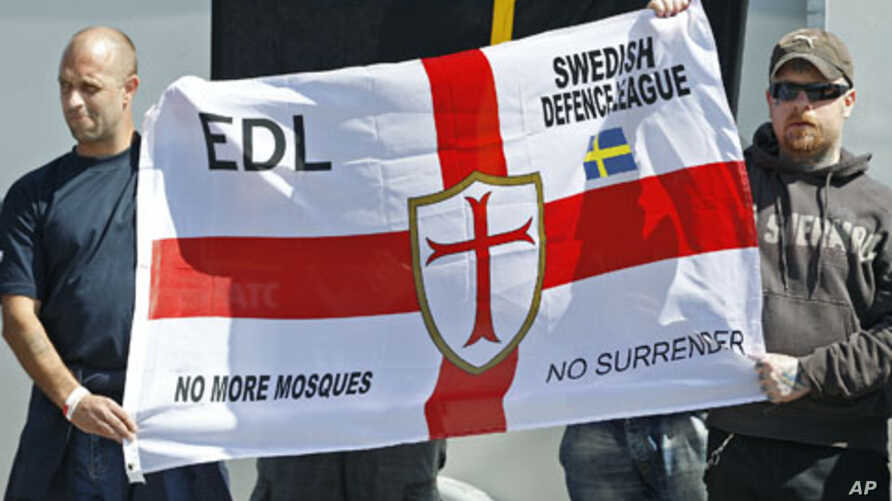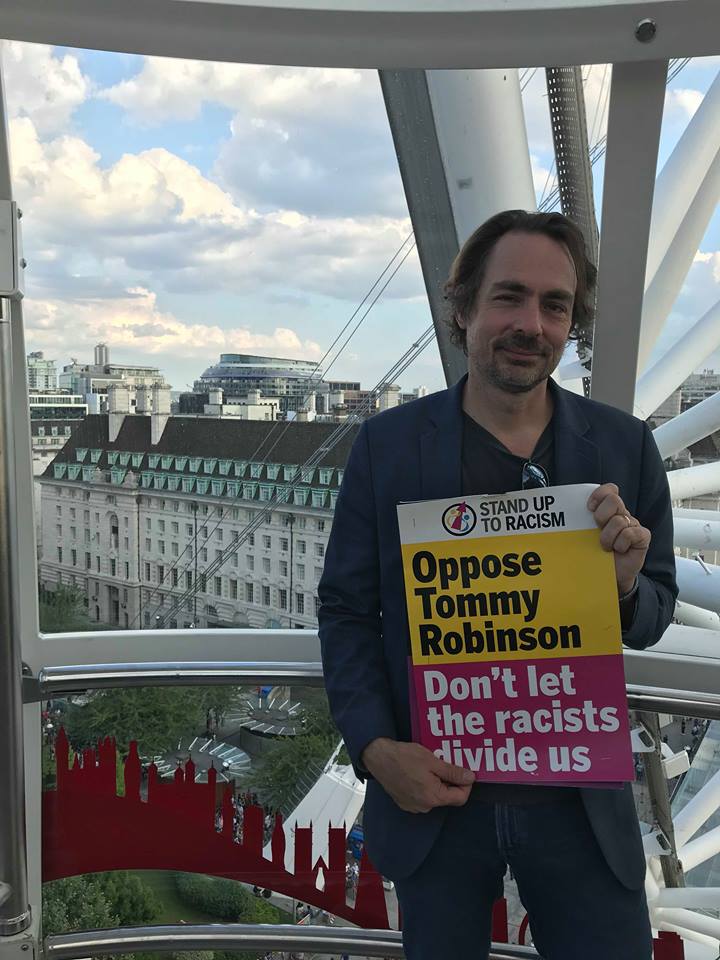February 7, 2021
Watching the Wheels began as a parenting blog but it’s turning into a policy blog. My broader social commentary started with the 2014 killing of Michael Brown in Ferguson, Missouri and exploded with the ascent of Donald J. Trump. I promise we’ll get back to the kid, but there is a pressing reason I’m spending some extra energy on right wing extremism: April 19.
April 19th is the anniversary of the 1995 Oklahoma City bombing that killed 168 people, including 19 children, collapsing a federal office building, and has since been linked to “Patriots’ Day” by the right-wing underground. That underground is now very overground and the chatter in their world is that is that the January 6th Capitol attack was just the warm up. Fasten your seatbelts for April 19, 2021. We could see another wave of right-wing violence as they make their play for Civil War II.
It’s been encouraging to see the Biden Administration pivot to make the threat of domestic terrorism a priority, including ordering a nationwide assessment of the emerging threat, with the National Security Council responding in a way reminiscent of how the intelligence community responded after 9/11. The Biden team’s focus and the fact that capable experts like Rep. Elissa Slotkin (D-MI) will take the lead on the Counterterrorism Subcommittee are an encouraging start. There are plenty of challenges ahead, including our lack of a federal definition of “domestic terrorism” and the policing of such actions that also respects our first amendment protections.
But domestic terrorism is also an international issue.
I was having a conversation last week with a representative of a foreign consulate who was looking for ways that her government could navigate the post-January 6th world that the Biden Administration had inherited. (I won’t name her nation, but we’ve had a relationship with them since 1776.) As we spoke, it became clear that there are multiple international intersections in our efforts to confront right-wing extremism. The issues that came up revolved around three themes; intelligence, trade issues, and international relations. There are probably more but this is what came up in our hour-long talk.
White supremacy as a global movement
Over the last thirty years we’ve seen a decidedly internationalist trend in the nationalist responses to globalization. For me, this began in 1990s and charting how racist skinheads in America were looking to Serbian nationalism and the Balkanization of Yugoslavia as a roadmap to a race war in the United States. Notorious white supremacists like David Duke have cultivated large followings (and income flows) from Mother Russia. Any European nation that has struggled with an inflow of migrants has seen a surge in Neo-Nazi violence. In July 2018, I was in the UK to study British CVE (Countering Violent Extremism) programs and I worked my way into an English Defense League rally in London, under the shadow of Big Ben. Supporters of banned nationalist Tommy Robinson were laying out anti-immigrant tirades to a crowd of angry white men, many in Trump hats. In England. Two weeks ago, Germany handed a right-wing extremist a life sentence after he was found guilty of shooting a pro-immigration politician in the head at point-blank range, killing him. Racist nationalism is an international problem. The fact that mass casualty events in Oslo, Norway, lead to similar attacks in Christchurch, New Zealand, which lead to similar attacks in El Paso, Texas is proof.
The specter of a pan-Aryan movement has long been a reality. I discussed it in my search on Odinist prison gangs in the 2000s. An international network of racist pagans shared plans for their racial holy war from behind prison walls. Before that, research on white power rock bands traveling to Europe, revealed the trafficking of Neo-Nazi paraphernalia and ideology across the Atlantic. In 1991, I was interviewing a skinhead in (what had just been East) Berlin, Germany, and told me, in broken English, “We have many friends in your country.”
Last summer, the U.S. Senate introduced S. 4080 – the Countering Global White Supremacist Terrorism Act. It’s a great start (if it ever passes) to assess the nature of the global connections to the domestic white supremacist call for a racial revolution. In the wake of the “dry run” on January 6th, the intelligence part of this effort needs to include four key elements.
- Foreign support for domestic extremists. While privacy rules make the work difficult, intrepid journalists have started following the money and unmasking the financial backers of the radical right, like the Mercer family. It is likely that money coming to back the Proud Boys, the Oath Keepers, and other groups hell bent on their “boogaloo” civil war is also coming from sources outside the United States, including Russia. The financial streams must be revealed and interrupted.
- Foreign disruption and misinformation. If the 2016 election taught us anything, it’s that a little disinformation dropped into your cousin’s Facebook feed can turn a country upside down. In 2015, few people (including Republicans) thought Donald Trump had a snowball’s chance in hell of becoming president. In January, 2017 he was sworn in. We know that Russia played a role in that campaign. Foreign interference that repeats tropes like “Black Lives Matter is a communist organization” are a part of our digital realities and serve to push “I’m not racist, but..” Americans into white supremacist worldviews.
- Encrypted communications. A lot of racist cross-national communication is right out there in the open, on Parler, Twitter, 4chan, and even Instagram. But white supremacists have long utilized encrypted communications. Whether they are sending messages on Telegram, Tox, through video game networks, or communicating in handmade codes on the deep deep web, the chat includes bomb making techniques, hit lists, and potential coordination on terrorist plots. They’ve looked to ISIS and other international terror groups for both mainstream recruitment techniques (ex. YouTube) as well as for tips on secretive channels of communication. We must work with our international partners to penetrate this information flow.
- Pan-Aryan movements. More must be done to understand the international connections of white supremacist terror organizations, like Atomwaffen Division. We’ve tended to think of these groups as “home grown” and disregarded their international connections. The internet has linked racist organizations in South Africa to similar groups in South Carolina. The role that Facebook live-streaming played in the 2019 Christchurch shooting that left 51 dead demonstrated that these so-called nationalists are playing to an international audience.
How trade policy impacts white nationalism
During my discussion with the consulate’s office, the issue of trade policy came up. It wasn’t a topic I was expecting or felt qualified to talk about, but it was clear there were some issues that were relevant. Much of racial nationalism is fueled by globalization. Globalization diminishes national identity (There’s an infinite number of McDonalds and Starbucks in Paris) and increases immigration. This was an obvious driver in Britain’s 2016 Brexit vote, the rise of Trump (“America first!”), as well as racialized nationalist movements in Poland, Germany, and Greece. Trade policies designed to reduce pushes into white supremacist movements and their calls for violence must be mindful of the following two questions:
- How does this policy impact agrarian or manufacturing labor segments? The very first of racist skinheads I studied in the late 1980s were racist skinheads because of deindustrialization. Their parents were being laid off of their manufacturing jobs which were being shipped to Mexico and China. And the only analysis they were getting was from the White Aryan Resistance who told them that it was a global Jewish cabal that was destroying their shot at the American dream. My 1990s skinheads added the giant sucking sound of NAFTA as the backdrop of their downward mobility. The Economic Policy Institute estimates that over 600,000 manufacturing jobs moved to Mexico after President Clinton signed NAFTA in 1994. Any trade policy must look at the impact on blue collar labor, whether in the factory or the field. An example of countering the trend, Samsung ovens are now made in Tennessee. The profits still flow to South Korea, but a lot of workers are getting to bank their money thanks to the push to revitalize our industrial labor force. This type of trade policy breaks the back of jingoism.
- How does this policy impact labor migration? Environmental policies will impact migration patterns as the planet warms. Refugees leaving drought ravaged lands where farming and access to clean water are stressed will become a fact of life unless international policies tackle climate change. Similarly, trade policies (which now often have an environmental component) can be mindful on the impact of the migration of labor. If a policy is likely to increase the migration into the United States, the benefit to Americans must be made clear. Otherwise, the policy (and the earnest foreign workforce that emerges because of it) becomes a white supremacist weapon for scapegoating, xenophobia, and hate crimes.
To work with America you must understand America
There is also a conversation going on from Philadelphia to the Philippines about what kind of country America is in 2021. Especially after four years of Trump. Our standing on the world stage has plummeted as our national interests were supplanted by Donald’s personal interests. As the Biden diplomatic team repairs the damage done to our international relationships, our global partners need to be mindful of four factors that drive activism in the extreme right.
Because each of these is a complex issue, worthy of pages of analysis, I’ll be incredibly brief.
- Understanding the split in the Republican Party. The symbolic division between the party of Representative Lynne Cheney (R-WY) and Representative Marjorie Taylor Greene (R-GA) reflects the split between the “Grand Ol’ Party,” with it’s core conservative values, and the nut-job wing that remains loyal to Trump, QAnon and the calls for an uprising to defeat the “communist” Democrats.
- Understanding that nationalism is a response to globalization. Over one hundred years ago fervent calls to “(Your country here) first!” set the stage for the “war to end all wars” and paved the way for the rise of fascism. Without the strength of our international treaties (I’m looking at you, UK), we’re back to square one.
- Understanding paths to radicalism and access to resources for deradicalization. There’s more than enough scholarship on why people become extremists. Programs in Sweden (Exit) and Britain (Prevent) have pioneered excellent methods to deradicalize extremists. It’s time to share the wisdom.
- Confronting extremism in the military. We are not the only nation whose militaries contain Neo-Nazis who dream of bombing Israel, African and Arab countries, and liberal metropolitan areas. A global strategy to confront this issue should be the first step in an international effort to prevent large scale attacks.
And now the work begins
We talked about a great deal in one hour. I can really squeeze a lot in when I think there’s a ticking time bomb, like April 19th. That day may come and go without event, which I desperately hope will be the case. (April 20th is Hitler’s birthday, so wait to exhale.) America is starting from less than zero because of the hole Donald Trump dug. But, with the help of our friends around the world, we can put our shoulders to the wheel and ensure our common dream to live in a safe and stable nation.














